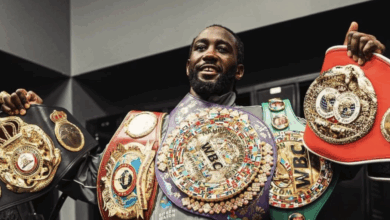How to write about fights and create fight scenes
Many screenwriters, free essay writers and “screen readers” told me about their difficulties in writing fight scenes, a very interesting topic we had never discussed in the blog. So I got down to work and started reflecting and researching about it.
Conclusions I came to I have transformed them into a list of tips to keep in mind when describing fights, fights, or action scenes. Let’s see what you think:
1. Read fight scenes
This is the first and most obvious tip, but it should not be missed. The best writing school is in books. To write a fight, look for novels and stories that contain this kind of scene, select those you like the most, and try to find out why they work. What structure does it follow? What kind of sentences and vocabulary does it use? What rhythm? Does it contain dialogue? The answers can help a lot when narrating our own fights.
2. Use the spaces
The setting is very important because the space in which the fight takes place can add tension. It is not the same if the fight takes place in the middle of the street than on top of a rooftop, with the danger of someone falling off.
3. Use the objects
Another thing to keep in mind regarding the setting is the tools. For example, the typical bar fight in which chairs or bottles are used. Or the stone that someone picks up from the ground to smash on his opponent’s head.
Use the objects around the characters. Use your imagination. I didn’t learn this advice from a literary man but from Jackie Chan… But, hey, he knows a lot about fighting too! And he tends to use the most bizarre elements at hand to make the fight more original.
4. Think about the characters
Before starting any fight in your story, think for a moment about the characters involved. If they are clumsy, cowardly, or mean, you may want to consider how they will behave during the fight.
Also, be careful with the number of characters. It may be a large battle or fight, but try to focus on two or three characters at most. Otherwise, it can be confusing for the reader and difficult for you as the storyteller to handle.
5. Keep the pace
Unless it’s a taichi match, no one fights slowly. The pace of a fight needs to be fast-paced and tension-provoking. In this sense, the use of short sentences helps. But be careful. If you only use short phrases, the rhythm can be monotonous and have the opposite effect.
The ideal is a predominance of short sentences alternating with longer ones that provide details of the fight. If there is dialogue, keep it short and intense and add something to the narrative.
6. Watch the vocabulary
The words you choose to tell the fight will also affect the pace and tension. Verbs evoke action and add dynamism; adjectives tend to slow down. In addition, the sonority of the words can be more or less emphatic and have more or less force. Reading the scene aloud will give you clues as to which words work and which do not.
7. Visualize and show
Before writing it down:
Visualize the fight in your mind, imagine the details, and then show them in words.
Don’t just list the movements as a sequence of events.
Try to convey details and sensations as well, increasing the excitement.
8. Make it matter
A key factor for tension in such a scene is that there is something to make the reader care. It may be, for example, because one of the characters cares or because of the consequences the fight will have on the plot, but the reader will experience it more intensely if something is at stake.
9. Think about what changes
Tying in with the previous point, don’t lose sight of the consequences of the scene for the characters involved and the plot. If there’s a fight, it has to be about something, and it has to be important. And, of course, it has to affect the story. So think: Why does it happen? How does it end for each character? Are they hurt? Do they die? Do they suffer any punishment? What changes?
10. Plan the scene
Before you jump into writing the scene, try planning it, especially if it’s a large battle. You can create maps, diagrams, diagrams, sketches, drawings… Whatever you are comfortable with. It will help you not to get lost describing the fight.
11. Enjoy writing
Finally, perhaps the most important: you have to enjoy writing your fight scenes and live them with intensity to convey emotions to the reader. A useful trick: while you are writing the scene, play exciting music in the background to put you in the situation. It’s sure to help.

